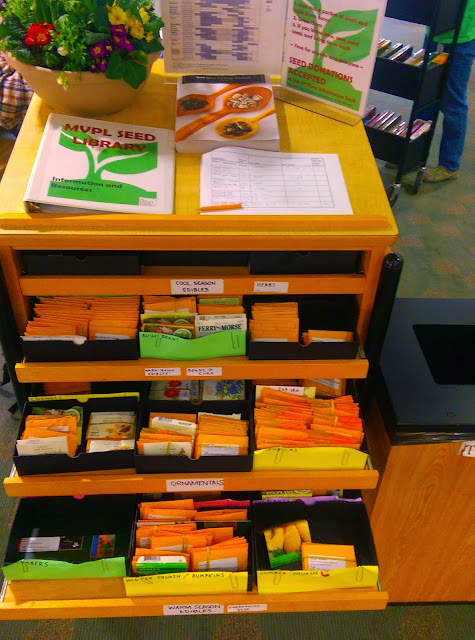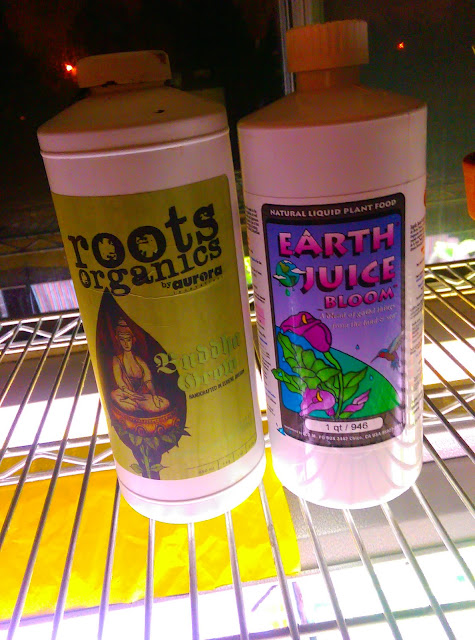Neem picking time. Tiempo de cosechar Neem.
Cacao del Ecuador machucado por primera vez / Ecuadorian Cacao First Grind
Esto es Chocolate hecho a mano./ This is hand-made chocolate.
Lime green & burgundy Cacao pods
Differences Between True Indian Neem -Azadirachta indica, Melia azedarach, Azadirachta excelsa & Azadirachta indica spp. siamensis Neem
One of the difficulties within the botanical and scientific fields is categorization and deciphering between variety, sub-species, species, genera and sometimes even among plants in different families because the specific types of differentiating indicators used to tell them apart may not be readily available such as flowers and/or seeds. The environmental conditions may or may not be ideal for the characteristics to reveal themselves as is the case for why many sub-species & varieties sometimes develop. Another thing that creates misunderstandings is the use of the same common name for many different specimens.
Here are just some of the differentiators and indicators to help distinguish between the most commonly used:
1. 'Indian Bitter Neem' Azadirachta indica
2. 'Sentang Jack' Azadirachta excelsa
3. 'Super Thai Neem' Azadirachta indica spp. siamensis (sub-species)
4. 'Chinaberry' Melia azedarach
'Chinaberry' Melia azedarach: In the early months of 2016 we first heard about people confusing the Melia azedarach for Indian Neem. One historical point to bring up is that as scientist, botanist & professional horticulturists come to a general conclusion about plants they do get reclassified and at one point the now Azadirachta indica used to be categorized and so named Melia indica. Otherwise, there really shouldn't be an issue visually recognizing the two if they are next to each other. Any person familiar with the true Neem would not have a problem telling the difference between the two. Melia azedarach shows bi-pinnate or even tri-pinnate leaves vs single for Azadirachta indica. Below are leaflet photomicrographs provided by Revista Internacional De Botanica Experimental / International Journal of Experimental Botany (Source) taken using a Reichert Microstar IV microscope at the Plant Taxonomy Research Laboratory, Botany Department, Faculty of Science, Ain Shams University, Cairo, Egypt.
Photographs illustrating foliar characteristics of Azadirachta indica (a,c,e,g,i) and Melia azedarach (b,d,f,h,j).
'Super Thai Neem' Azadirachta indica spp. siamensis (sub-species) :
There is still discussion whether the taller neem trees with obvious larger leaves and seeds, longer flowers and much taller trunks of Thailand are another species or sub-species. These Thai trees sometimes exhibit red or white flowers. We believe the latter as all other traits are similar except strength/concentration of chemical properties along with physical attributes are more pronounced and again larger and taller than Indian neem (A. indica) and for that reason you'll often see its name written Azaditachta indica spp. siamensis. A study of pollen morphology and isozyme-patterns was completed Boonsermsuk & Jitjamnong, (1989). In this study, 3 distinct varieties of the species were found based on pollen study conclusions. That 3rd variety with distinct characteristics was labeled Sadao Thiam, aka Sadao Chang, aka Azadirachta excelsa (Jack). The two seemingly more similar varieties only differed in thickness of their pollen membrane, but all other pollen characteristics remained the same. A. indica spp. siamensis ocurred naturally in moist deciduous forests not dry areas as where most A. indica can be normally found. (Source: Food & Agricultural Organization of the United Nations. http://www.fao.org/docrep/006/u5380e/U5380E08.htm)
'Sentang', 'Marrango', 'Philippine Neem', Azadirachta excelsa (Jack), Azadirachta intergrifolia, (species): A major differentiating characteristic from Indian neem is found in the leaves of this species. Leaflets are elliptical, asymmetrical with entire margin (not serrated as in Indian Neem). Flowers are also a greenish white. Indian neem leaves are imparipinnate (terminal unpaired), containing eight to 19 leaflets per leaf, simple teeth order and about two teeth per centimeter.
Fruits, flower and flowering branch of Azadirachta excelsa (Jack). From: Plant Resources of South-East Asia No. 5:2.
For any further questions or comments please feel free to leave here or text Neem questions to:
1-872-588-TREE (8733)
In-Depth Resource for Historical Information on Neem
Here is the link for some in-depth historical use information on Neem from:
The National Institute of Health, U.S. National Library of Medicine and the National Center for Biotechnology Information.
Last Neem Flowers
As the Neem seeds now in July are starting to develop we get our last glimpses at the remaining white lilac like flowers. With all the fuss about Neem leaves & seed oil not much attention is given to the flowers of our pharmaceutucal tree. So little knowledge of the plant parts that folks have a hard time deciphering ir apart from other similar looking plants.
Neem seedlings and their leaves have a slightly different look since they have still to develop full limbs with rows of 'feathered' leaves. There are a couple of species & varieties adapted to different growing environments.
There is the Azadirachta excelsa known also as the 'Super Neem' since it grows larger & its beneficial contents multiplied. Other characteristics are typically the same at the same stages of their life cycles.
Green Walnut Fruit
Walnut fruit on tree.
Walnut tree.
Have your ever seen a Walnut fruit? A liqueur named Nocino from Italy's Emilia-Romagna region is made by steeping green walnuts in spirits.
Unripe Green Walnut
Peas in their shells. / Gandules entre su cascara.
Light Brown Pigeon Peas / Gandules Marron Claro
Cajanus cajanus mature beans/seeds to the right. Immature green peas of the same in upper left side of picture. / Gandules maduros a la derecha y 2-3 gandules verde en la izquierda de esta fotografia.
Finally got some light brown pigeon peas harvested. Thanks once again to Joe Simcox for acquiring the seeds. They're exactly like my favorite greener pigeon peas / guandules verde we traditionally eat in Dominican dishes, but in this case these are from India & lightly brown instead of green. Soon I'll taste them & let you all know. We make "Moro de guandules" with them cooked within the rice with special seasonings, onions, garlic, tomato paste and cilantro. / Finalmente coseche un poco de gandules marrones. Iguales a los gandules verde que usamos para hacer 'Moro de guandules' en nuestro plato tipico de la Republica Dominicana. Gracias a Joe Simcox por encontrar y ofrecer estas semillas. Haber como saben en un plato con arroz, cebolla, ajo, sazon especial, pasta de tomate y cilantro.
Flowers, leaves & seed pods. / Flores, hojas y vaina de semillas.
Saving seeds. / Guardando semillas.
Loose dry Moringa oleifera leaves
Moringa Tea
First experience with Moringa (oleifera) tea was from a box found in a home-goods discount store. I didn't expect much, but was happily surprised once I actually tried it. Being such a powerhouse as far as nutritional value was the main drae, but it was also so tasty, earthy, warming and fulfilling that I reached out to the Canadian business that made it in order to try to get more with no luck. The company was no longer producing that tea.
Luckily for us, we live in California, 1st or 2nd home to many Filipinos resulting in small mom & pop shops offering goodies like 'Malunggay (Moringa oleifera) tea and the bitter Lagundi (Vitex negundo) tea.
The true blessing arrived with my Auntie Jaquelyn who flew back from the Dominican Republic with some dried Moringa leaves sent by Blanco Pops Peña. Thanks again Pops!
The recent fame of Moringa has led to people in the Dominican Republic and many other countries as well being sold imitation, random plants trying to pass as Moringa thus resulting in sick and disappointed consumers. Plants in our countryside have been found chopped down to the stumps in the middle of the night as demand has been outpacing supply lately.
Tea box from Mom & Pop Filipino store in Milpitas, CA.
An Orange A Day...
Well as they say, an Apple a day keeps the doctor away and it should definitely be applied to most of the hardy citrus trees. I sometimes wonder as I walk around my California neighborhood as to why we still even buy limes, lemons and other citrus fruits in the stores because they can be found all over as they light up every other space among the landscaped and overflowing wild gardens in town.
We only have a potted Calamansi citrus tree in our yard. The most popular, traditional seasoning and drinking citrus amongst Filipinos. We normally get abundant fruits (20-30) every harvest, but this last round it set only about 10 fruits so they grew a lot bigger than normal.
Kajari Melon Harvest 2015
Thanks to Joe Simcox the Botanical Explorer who was offering these seeds at this year's San Francisco Flower and Garden show in San Mateo. The original seeds came from India and had a red dye color to them warning of a toxic pesticide that had been added in order to transport them into the country. This way no insects could hitch a ride with them. In most countries it is added to avoid them being eaten by ants and other wildlife when planted.
We only had container space at the time, but since then we have planted a few more in the ground at our Belle garden where they have over 1000 square feet to expand in. They started slow in the containers with over 9 hours of Summer Sun. In the end the vines grew a little over 6 feet long with just 4 small tennis size fuzzy fruits. The first container fruit slipped off of the vines in the past couple of days after about 85 days, a little longer than the 70 average days listed and slightly larger than a tennis ball. The smell was a strong nectar like sweetness that almost gave me a headache. Incredible! You'd think it would taste like honey. The skin was thin, bright, soft and fuzzy. The inner flesh was juicy, green, thick and sweet like a honey dew melon. Can't wait to get more abundant and larger harvest for the next round. Over 40 seeds in this small melon, but plenty of flesh. Check out the pics!
Fertilizers & Helping Your Plants Thrive
You can help your plants thrive by finding a consistent source, preferably free or at a very low cost. Once you see the difference fertilizing has on your plants you'll never look back. It serves as a little boost in the beginning of spring once it's warmed up a bit. You may or may not already notice fresh new growth emerging from your plants but then it would be the perfect time to add some fertilizer.
Fertilizers come from many sources and in different forms such as Powder, Granules, Compost or Liquid, etc. The main or let's say 'Macro' nutrients to look for are N for nitrogen, P for phosphorous and K for potassium. Think Up, Down & all around. N= Up/green growth, P= Down as in roots/establishment of the plant/flowering and K= All around/particularly aiding in flowering. We can get into micro nutrients later. They are far more numerous and detailed.
Make sure when you look at ingredients they sound like everyday items (Bat guano, Chicken/Cow/Steer manure, kelp, rice hulls). The synthetic type of fertilizer is not recommended because of the detrimental effect the runoff water with elevated fertilizer (Specifically Nitrogen) levels has on everything. A synthetic fertilizer bottle will read more like, 'Derived from: Ammoniacal nitrogen, Urea, Potassium Phosphate, Feric oxide', etc.
If you can avoid runoff water with fertilizer these 'synthetic' types can be used for ornamental & flowering plants.
Plant the Seed
A wise man said to me today, "Its like magic." You put one in the ground and it pushes out a multitude of seeds. Oh yeah & flowers, fruits and vegetables too. So if you can't find any viable (seeds WITH life in them) head to your local library. Most like our Mountain View library pictured here will have a 'Seed' section.
Our library provides free seeds. Just sign them out and make sure to return harvested seeds for neighbors next year and they shall do the same.
Another option. Buy some seeds from your local store many types sell seeds or online provider.
Did you know 99% of the seed companies will send you free catalogs? Oh my what a treat you will be discovering.
That's just the beginning... And there no end. Enjoy!


2015 Event Calendar: Chinese Medicine Health & Career Fair 2/21/15
I've never been to this event, but they mention on their advertisement:
Acupuncture, Herbs, Energetics, Diet, Massage, Immunity-Boosting treatments, Health Talks and FREE! At Five Branches University - Graduate School of Traditional Chinese Medicine, 3031 Tisch Way, San Jose, CA 95128, www.FiveBranches.Edu on Saturday February 21, 2015 from 10a-4p.
First Loquats of 2015!
Joseph Simcox Part 3
Thank you RevolutionofThought1.
Joseph Simcox Rare Vegetable Garden Tour Part 3: http://youtu.be/vBiU6qnRHaQ
Joseph Simcox Garden Tour Part. 2
Thanks again RevolutionofThought1
Joseph Simcox Rare Vegetable Garden Tour Part 2: http://youtu.be/EhWF-85xubw
Inspirational Speaking & Words of Passion
Thank you, RevolutionofThought1 for making this recording available. Check out his YouTube for more awesome videos with Joseph Simcox and his rare finds.
Joseph Simcox Rare Vegetable Garden Tour Part 1: http://youtu.be/E2fgIzGaonc







































